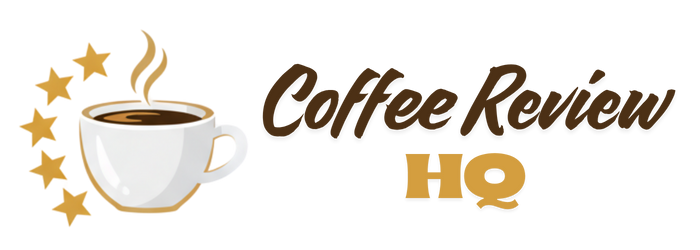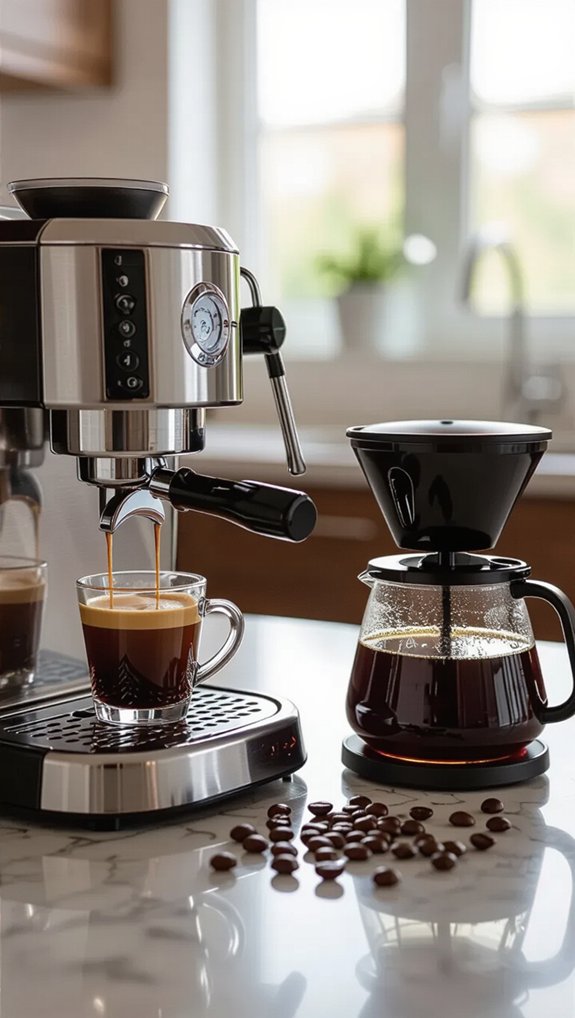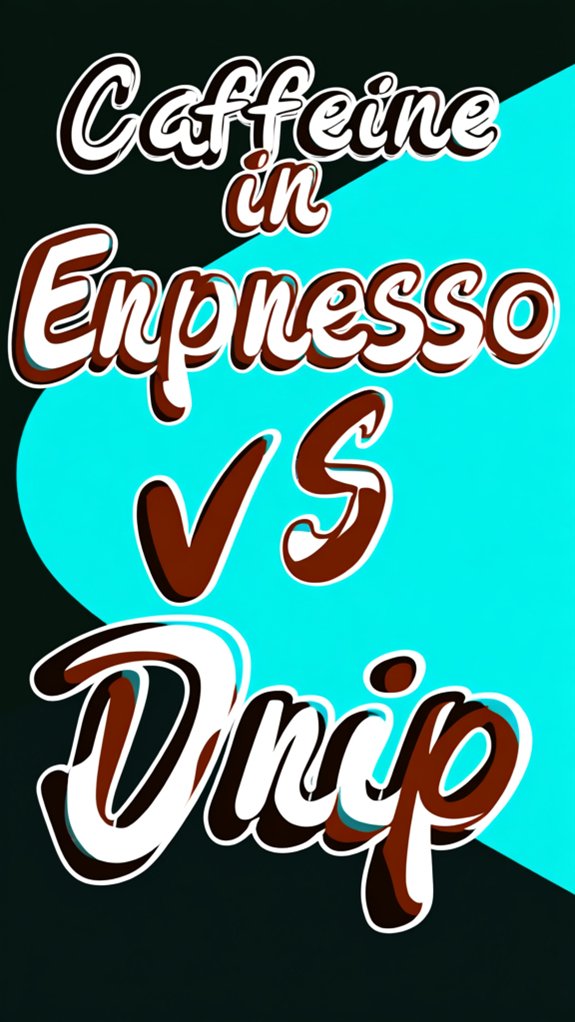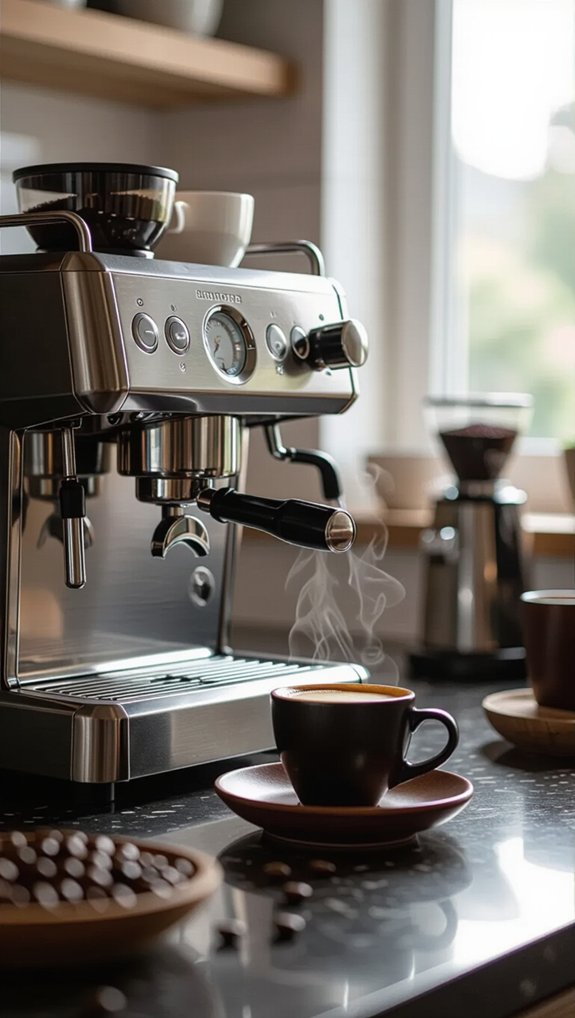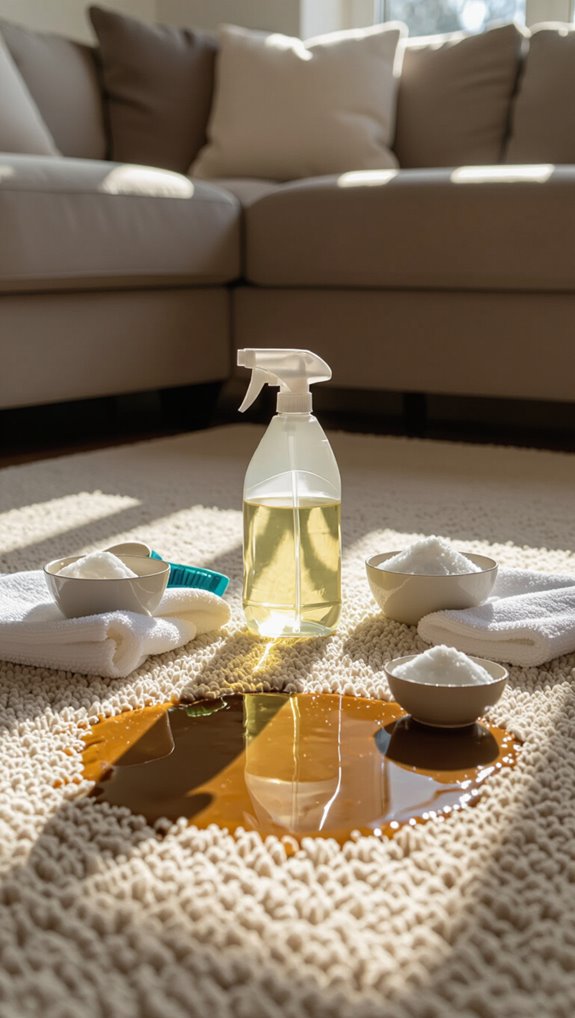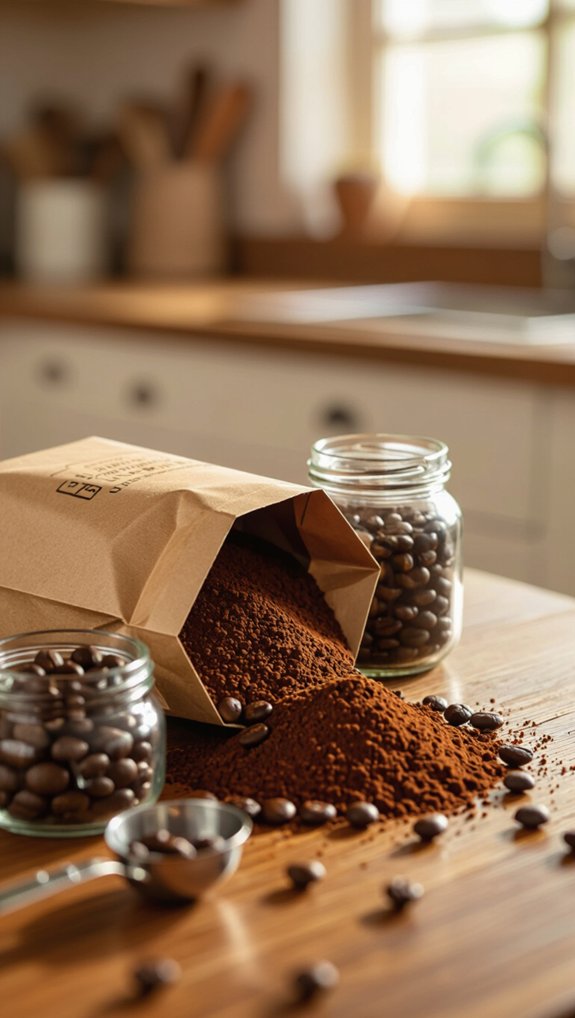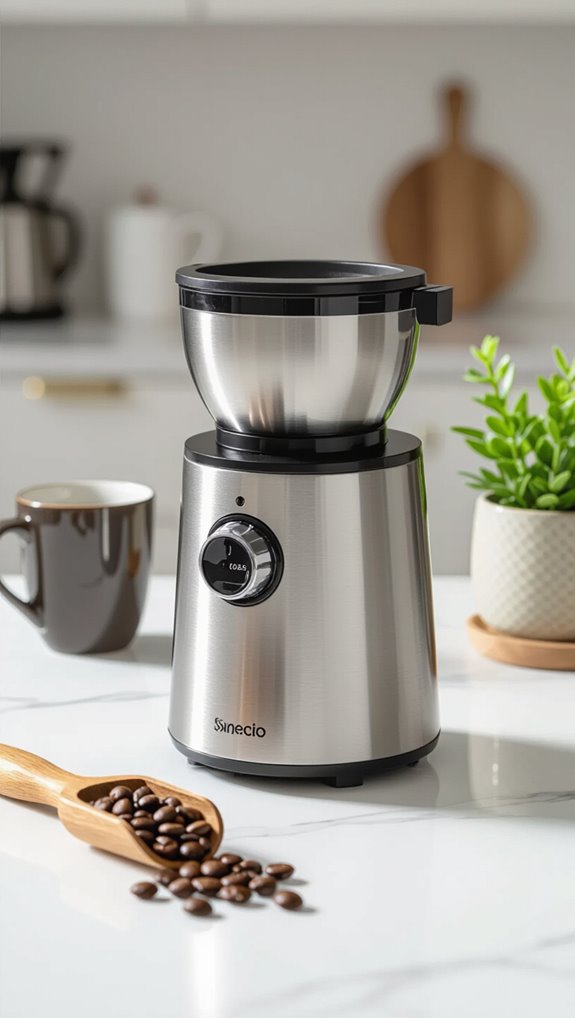According to the National Coffee Association, 62% of Americans drink coffee daily, consuming an average of three cups per day—yet most can’t accurately estimate how much caffeine they’re actually ingesting. This knowledge gap matters more than you might think, especially if you’re trying to manage your energy levels, avoid afternoon jitters, or simply understand why that second cup hits differently than the first.
The confusion is understandable. Coffee shops serve vastly different portion sizes, and the caffeine content varies wildly depending on whether you’re sipping an espresso or a drip coffee. Many assume espresso is always the stronger choice, but the reality is far more nuanced.
In this post, we’ll break down exactly how much caffeine is in espresso versus drip coffee, explore why concentration doesn’t tell the whole story, and reveal the factors that influence your actual caffeine intake. By the end, you’ll know exactly what you’re getting in every cup and how to tailor your coffee choices to match your caffeine needs.
Table of Contents
How much caffeine in coffee?
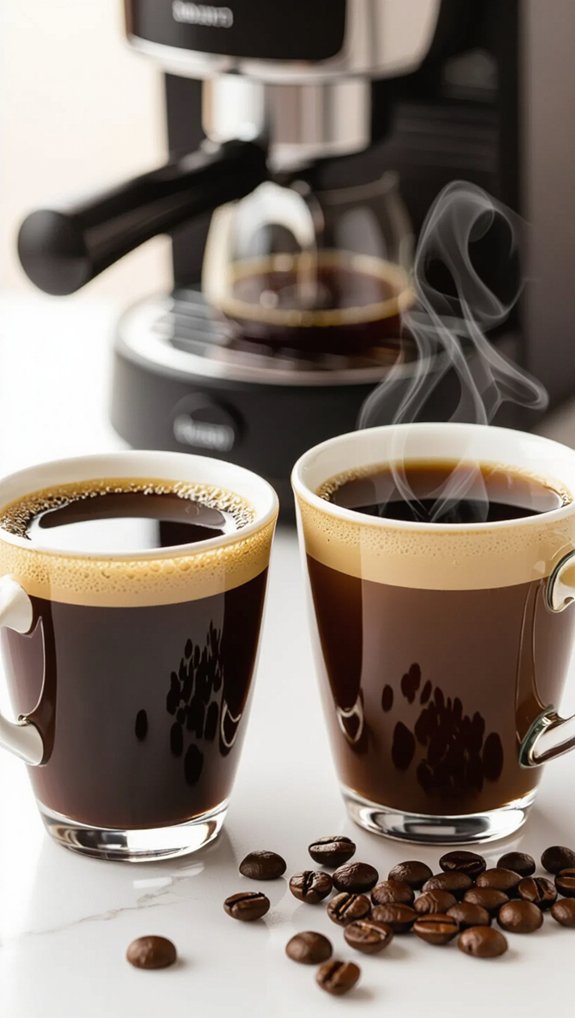
If you’re wondering about caffeine content in your daily brew, you’ll find that an average 8-ounce cup of coffee typically contains between 80-100 mg of caffeine, though this can vary widely depending on factors like bean type, roast, and brewing method. Caffeine metabolism can be influenced by individual factors such as smoking and alcohol consumption, which may speed up how quickly the body processes caffeine. Robusta beans pack nearly double the caffeine punch of arabica, while light roasts tend to have slightly more caffeine than darker roasts. Your brewing technique also matters – espresso delivers a concentrated caffeine kick, with a single shot ranging from 47-127 mg, while cold brew can push 246 mg per 12-ounce serving.
What affects caffeine per cup size
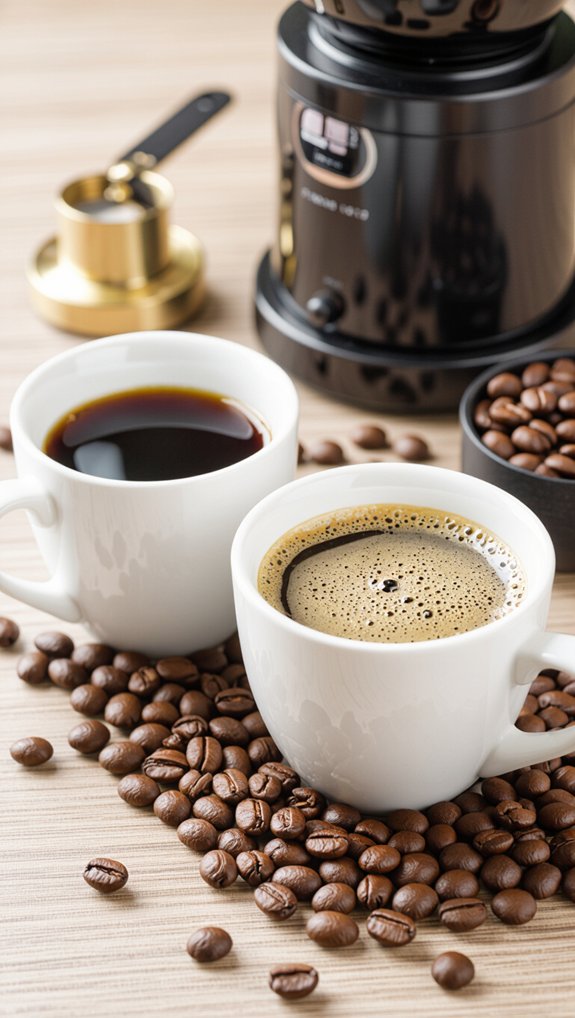
Comprehending what impacts caffeine per cup size requires examining multiple interconnected factors that influence your brew’s final caffeination.
Bean type, roast level, grind size, water temperature, and brewing method all play crucial roles in determining your cup’s caffeine punch.
Robusta beans pack nearly double the caffeine of Arabica, while lighter roasts retain more caffeine by weight.
Finer grinds and hotter water accelerate extraction, pulling more caffeine into your beverage.
Espresso’s concentrated brewing process and immersion methods like cold brew typically yield higher caffeine concentrations compared to standard drip coffee.
Your brewing choices directly shape each cup’s stimulating potential. Brewing duration significantly impacts total caffeine extraction, with longer steeping times typically yielding higher caffeine concentrations.
Espresso vs drip: caffeine per serving
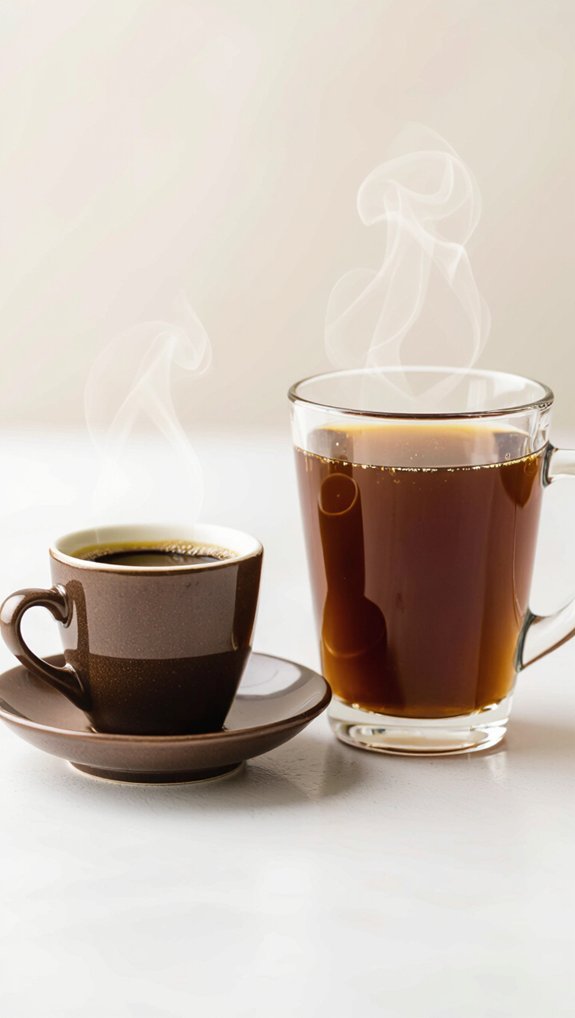
When comparing caffeine content, espresso and drip coffee reveal fascinating differences that might surprise many coffee enthusiasts.
A standard shot of espresso packs a concentrated punch at 63 mg per ounce, while drip coffee offers a milder 12-15 mg per ounce.
The total caffeine tells a different story:
- A single espresso shot delivers around 63 mg of caffeine
- A 12 oz drip coffee contains approximately 144 mg of caffeine
- Cold brew can exceed 207 mg in the same serving size
These variations stem from brewing methods, extraction techniques, and serving volumes, making each coffee experience uniquely caffeinated.
Extraction pressure significantly influences the caffeine concentration, with espresso’s high-pressure brewing method extracting more compounds per volume compared to traditional drip methods.
Decaf still has some caffeine, right?
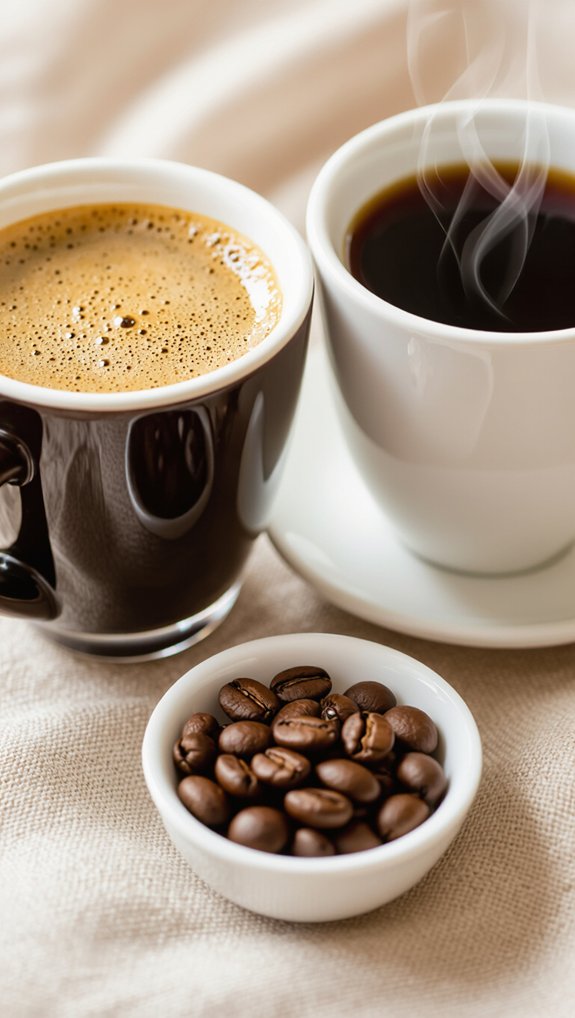
Surprisingly, decaf coffee isn’t completely caffeine-free—it still contains trace amounts of caffeine, typically ranging from 2 to 12 mg per 8-ounce cup. While decaffeination removes about 97-99% of caffeine, a tiny amount remains.
This means an average decaf might’ve around 5-10 mg per serving, compared to 95 mg in regular coffee. For context, you’d need to drink about 57 cups of decaf to hit the FDA’s daily caffeine limit.
Strong taste doesn’t mean more caffeine

Although many coffee drinkers assume a bold, intense flavor equates to higher caffeine content, this popular belief is fundamentally incorrect. Taste and caffeine are separate properties that don’t correlate in coffee preparation.
- A decaf espresso can taste stronger than a gallon of regular brewed coffee despite containing virtually no caffeine
- Dark roast and light roast coffees maintain consistent caffeine levels during roasting
- Brewing method and bean type matter more for caffeine content than perceived taste intensity
Ultimately, if you’re seeking a caffeine boost, focus on bean variety and brewing technique rather than judging by flavor strength.
Coffee origins and natural caffeine levels
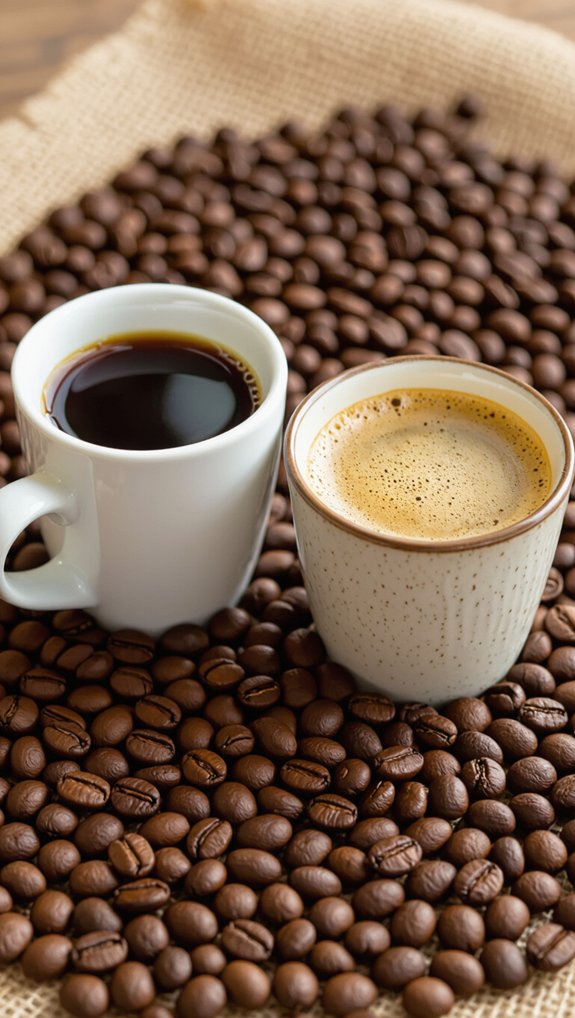
The caffeine content in coffee isn’t uniform across different species, and grasping these natural variations can transform how you choose and appreciate your daily brew. Comprehending coffee origins reveals fascinating caffeine diversity.
| Species | Origin | Caffeine % |
|---|---|---|
| Arabica | Ethiopia | 0.8-1.4% |
| Robusta | Africa/Asia | 1.7-4% |
| Laurina | Réunion Island | 0.6% |
| Racemosa | South Africa | <0.3% |
| Excelsa | Southeast Asia | 0.86-1.13% |
Genetic factors and growing conditions significantly influence caffeine levels. Higher altitude Arabica beans typically contain less caffeine than lower-elevation Robusta varieties, showcasing nature’s remarkable complexity in every coffee bean.
Tips to manage your daily caffeine
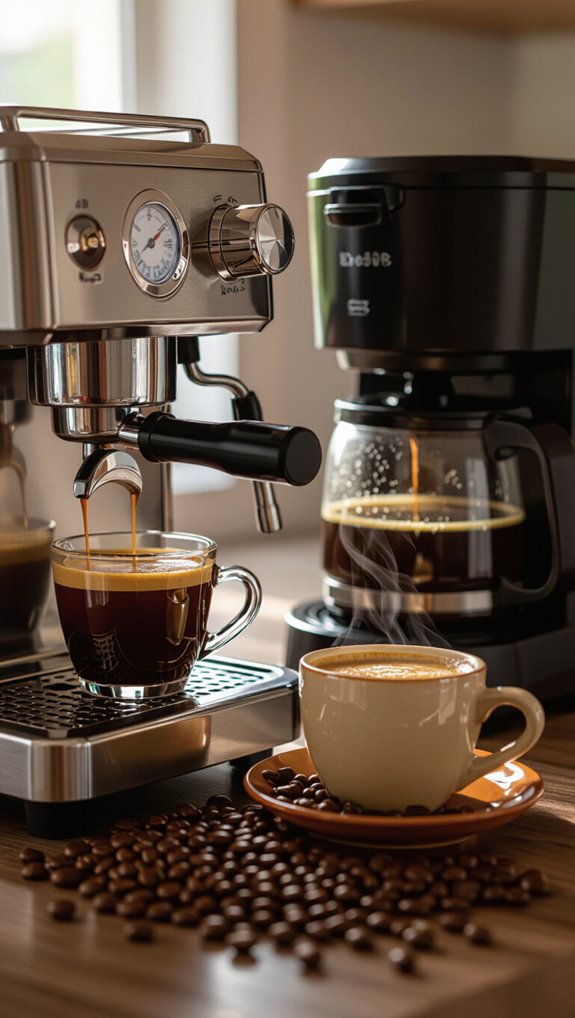
Managing daily caffeine intake isn’t just about cutting back; it’s about creating a balanced, sustainable approach to your coffee consumption.
I’ve learned that gradual reduction is key to minimizing withdrawal symptoms and maintaining energy levels.
Here are my top tips for managing caffeine:
- Limit intake to 400mg daily (about 2-3 cups) and stop drinking by 2 p.m.
- Replace afternoon coffee with water, herbal tea, or a brisk walk
- Track your consumption and slowly reduce by one cup every few days
Best machines for precise caffeine control
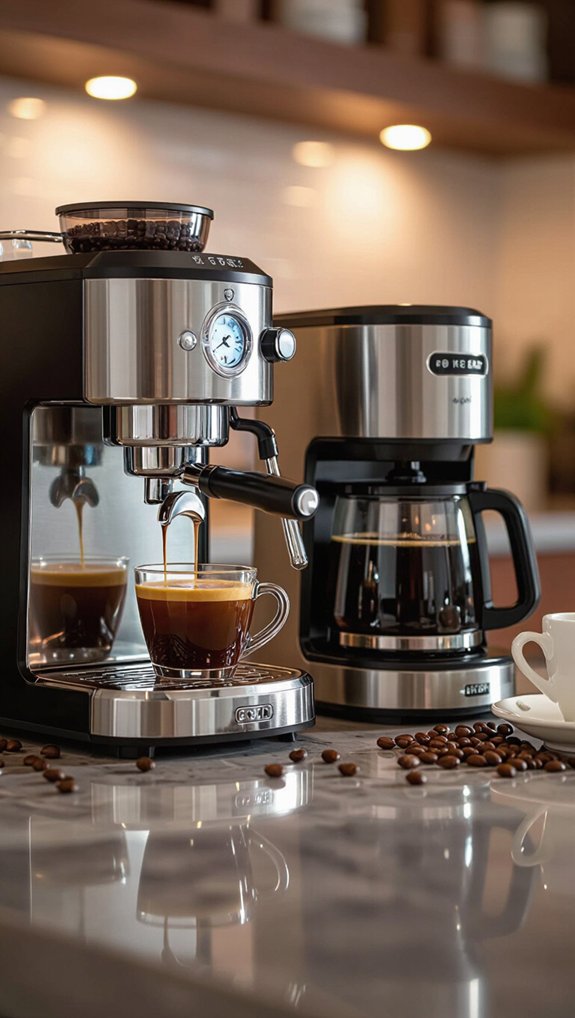
Unlock precise caffeine control with cutting-edge coffee machines designed to help you dial in exactly how much kick you want in every cup. Whether you’re a drip coffee enthusiast or espresso lover, modern machines offer unprecedented customization.
| Machine Type | Key Caffeine Control Feature |
|---|---|
| Drip Makers | Adjustable brew parameters |
| Espresso | Flow and temperature control |
| Automated | Programmable caffeine profiles |
| Scale Integrated | Precise coffee-to-water ratio |
These advanced machines let you experiment with bloom time, water temperature, and extraction methods, ensuring your perfect caffeine dose every single time.
How to make half-caf latte at home

Making a half-caf latte at home is easier than you might think, requiring just a few key ingredients and some basic equipment like an espresso machine or stovetop moka pot.
I’ll walk you through selecting the right half-caf beans, frothing milk perfectly, and creating a balanced espresso-to-milk ratio that’ll rival your favorite coffee shop.
Whether you’re looking to reduce caffeine intake or simply enjoy a milder coffee experience, this home brewing method will help you craft a delicious half-caf latte with professional-level results.
Ingredients
Craft a delicious half-caf latte at home by selecting the right ingredients: a balanced mix of regular and decaf espresso shots, your preferred milk, and optional sweeteners or flavor enhancers. The key is creating a perfectly balanced brew that gives you a gentler caffeine kick.
- Choose espresso beans wisely: blend one regular (63 mg caffeine) and one decaf (2-5 mg) shot
- Experiment with milk options: whole, skim, or plant-based like almond or oat
- Add personal flair with flavored syrups or natural sweeteners like honey
Your custom half-caf latte awaits!
Equipment
The home espresso machine is your gateway to crafting the perfect half-caff latte, transforming your kitchen into a personal coffee sanctuary. Breville Barista Express and De’Longhi machines offer the flexibility needed for creating balanced caffeine experiences.
| Machine Feature | Regular Beans | Decaf Beans | Blend Capability |
|---|---|---|---|
| Dual Grinder | Stored Separately | Kept Pure | Perfect Mix |
| Grind Settings | Fine Espresso | Consistent | Customizable |
| Steam Quality | Full Pressure | Smooth | Latte Ready |
Critical to success is preventing bean cross-contamination. Dedicated grinders and airtight storage ensure each half-caff creation maintains its intended flavor profile and caffeine balance, letting you control your coffee experience precisely.
Instructions
After selecting the perfect home espresso machine, you’re ready to master the art of creating a delightful half-caf latte right in your kitchen. Crafting the perfect half-caf latte involves precise steps that balance flavor and caffeine content.
Key techniques for your half-caf latte include:
- Brew a single shot of espresso to reduce caffeine by 50%
- Heat and froth 8 ounces of milk using a blender for creamy texture
- Add 1-2 ounces of liquid sweetener like maple syrup or caramel sauce
Pour the espresso first, mix in sweetener, then gently add frothed milk. Stir thoroughly, taste, and adjust ingredients to create your personalized half-caf masterpiece.
When caffeine hits and wears off
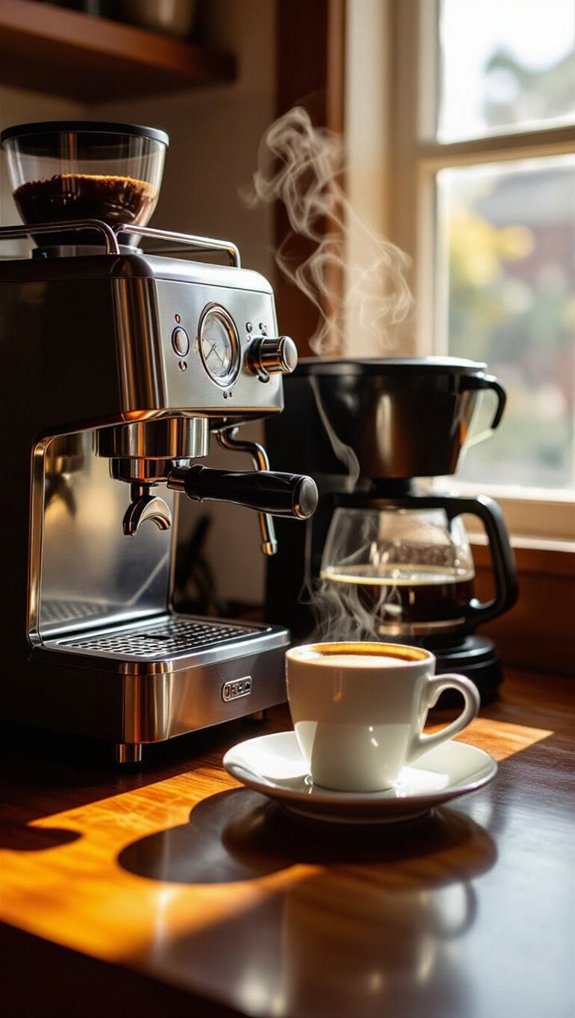
When you take that first sip of espresso or drip coffee, you’re launching a caffeine journey that impacts your body in fascinating ways.
Within 15-30 minutes, you’ll feel the initial buzz, with peak stimulation hitting around 30-60 minutes after drinking. Espresso tends to kick in faster due to its concentrated format, while drip coffee offers a more gradual absorption.
The stimulating effects typically last 2-4 hours, with caffeine lingering in your system for 5-6 hours.
Individual metabolism plays a key role, so your personal experience might vary slightly from these general timelines.
Frequently Asked Questions
Is Caffeine Content Different in Light Versus Dark Roast Coffee?
No, caffeine content isn’t significantly different between light and dark roasts. It depends on measurement method: by weight, dark roasts have slightly more; by volume, light roasts contain marginally more. The roasting process doesn’t substantially alter caffeine levels.
Can Drinking Coffee Impact My Sleep Quality and Duration?
Yes, coffee significantly impacts sleep quality. I’ve learned that caffeine can reduce my total sleep time by 41-45 minutes, increase sleep onset latency, and decrease deep sleep duration, especially when consumed within 3-6 hours of bedtime.
How Does Brewing Method Influence Total Caffeine Extraction From Beans?
Different brewing methods significantly affect caffeine extraction. Espresso’s high pressure and fine grind yield more caffeine per gram, while longer cold brew steeping times compensate for lower extraction efficiency, ultimately determining your coffee’s total caffeine content.
Are There Health Risks Associated With Consuming Too Much Caffeine?
Yes, there are significant health risks. I’ll warn you that excessive caffeine can cause heart problems, anxiety, sleep disruption, and nervous system issues. Consuming over 400mg daily increases your chances of experiencing serious side effects and potential long-term health complications.
Does Water Temperature Affect Caffeine Levels When Brewing Coffee?
Yes, water temperature significantly affects caffeine extraction. Hotter water between 195°F and 205°F pulls more caffeine from coffee grounds faster, while cooler temperatures extract less. I’ve found that brewing method and time also impact total caffeine content.
In Conclusion
Understanding how much caffeine is in coffee—whether you’re comparing espresso to drip—comes down to more than just the brewing method. Bean selection, roast level, grind size, and extraction time all play crucial roles in determining your final caffeine content. While a single espresso shot is more concentrated, that standard 8–12 oz cup of drip coffee typically delivers more total caffeine, making it the go-to choice for those seeking a bigger boost.
Whether you’re a dedicated home barista perfecting your morning ritual or someone who simply enjoys a reliable cup, knowing these factors empowers you to tailor your caffeine intake to your needs. If you’re ready to upgrade your brewing setup, check out our coffee machine reviews to explore smart, well-reviewed options that can help you craft your ideal cup every time. Experiment with different methods, find what works for you, and savor every sip.
